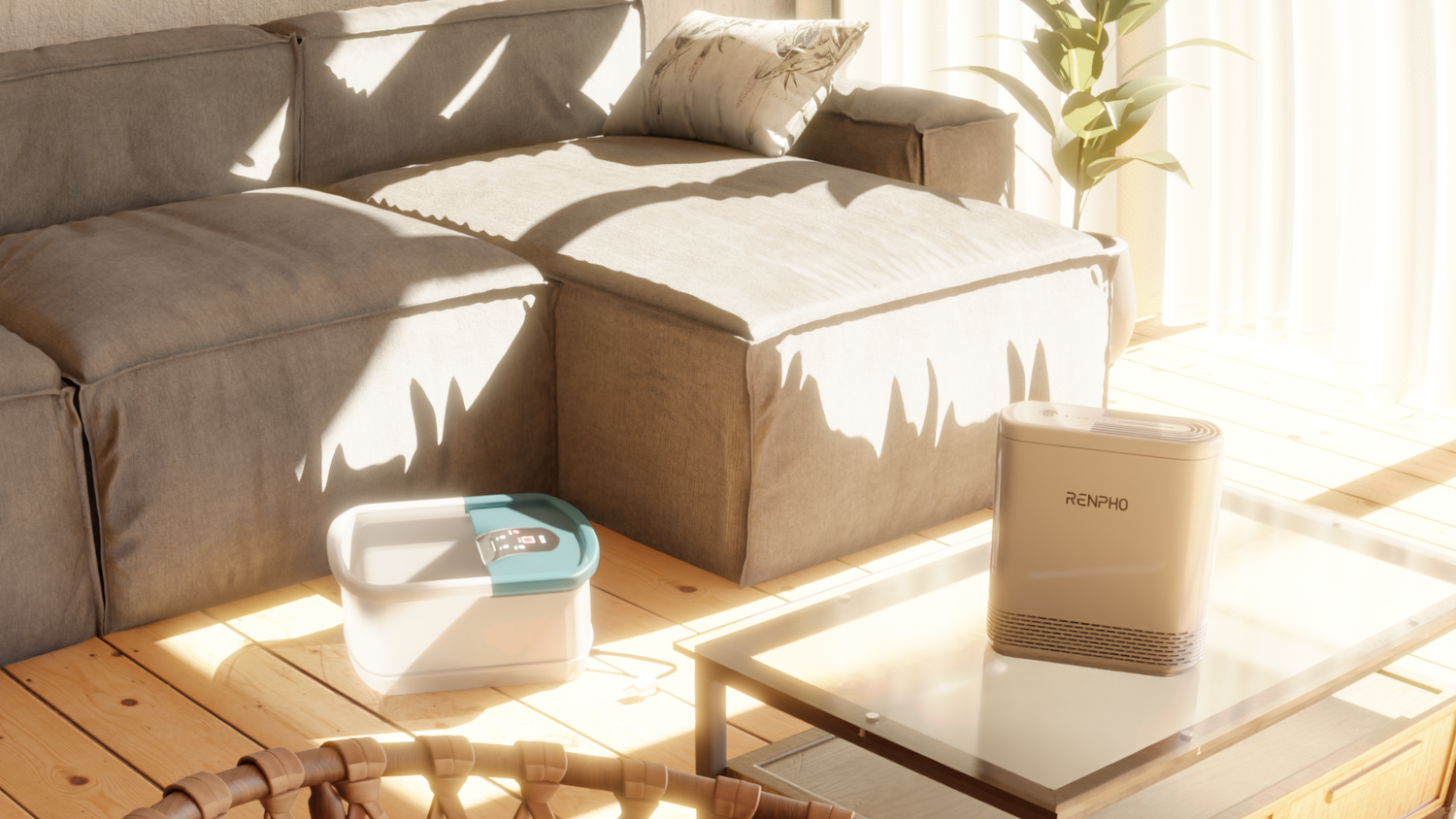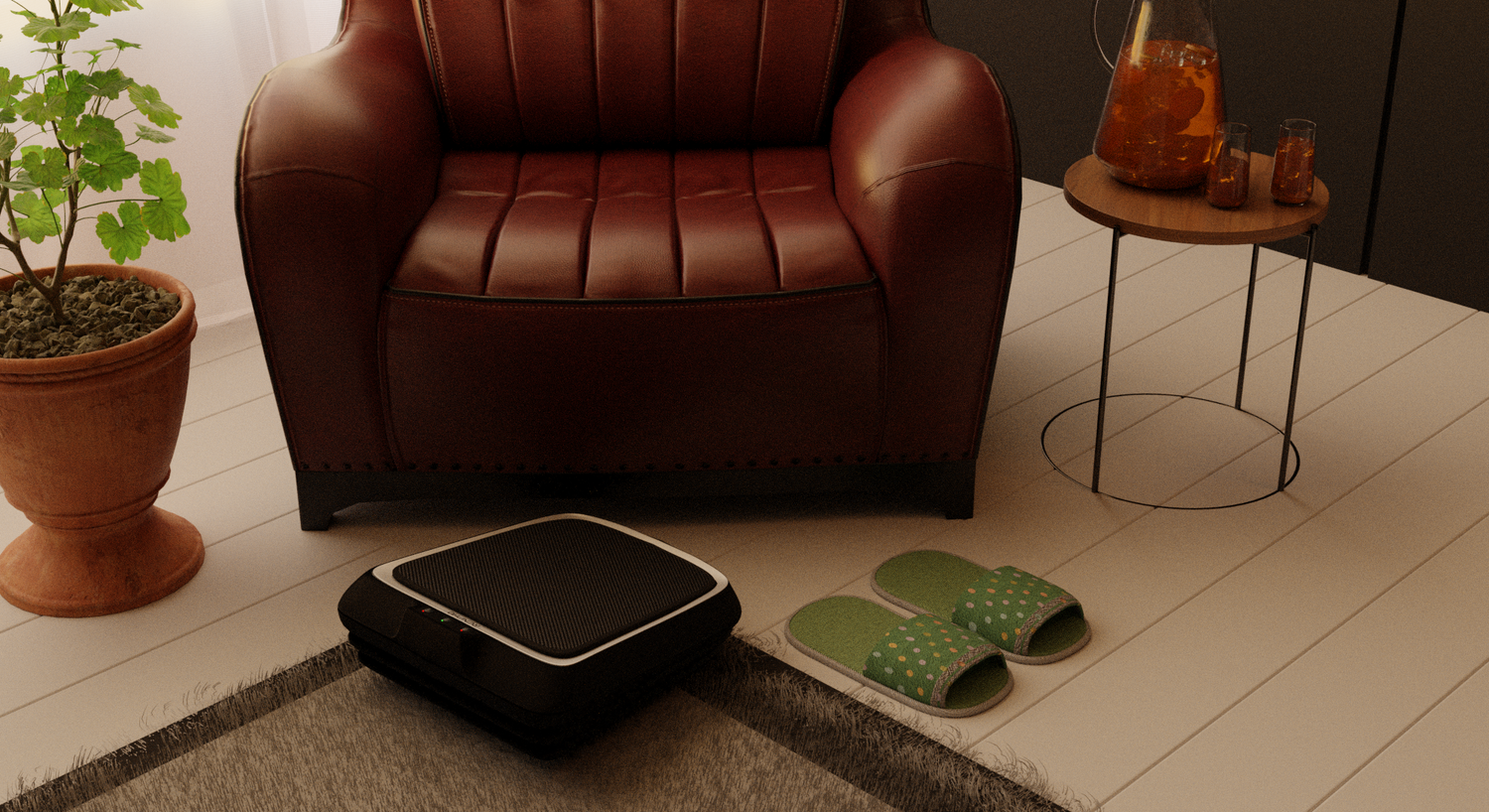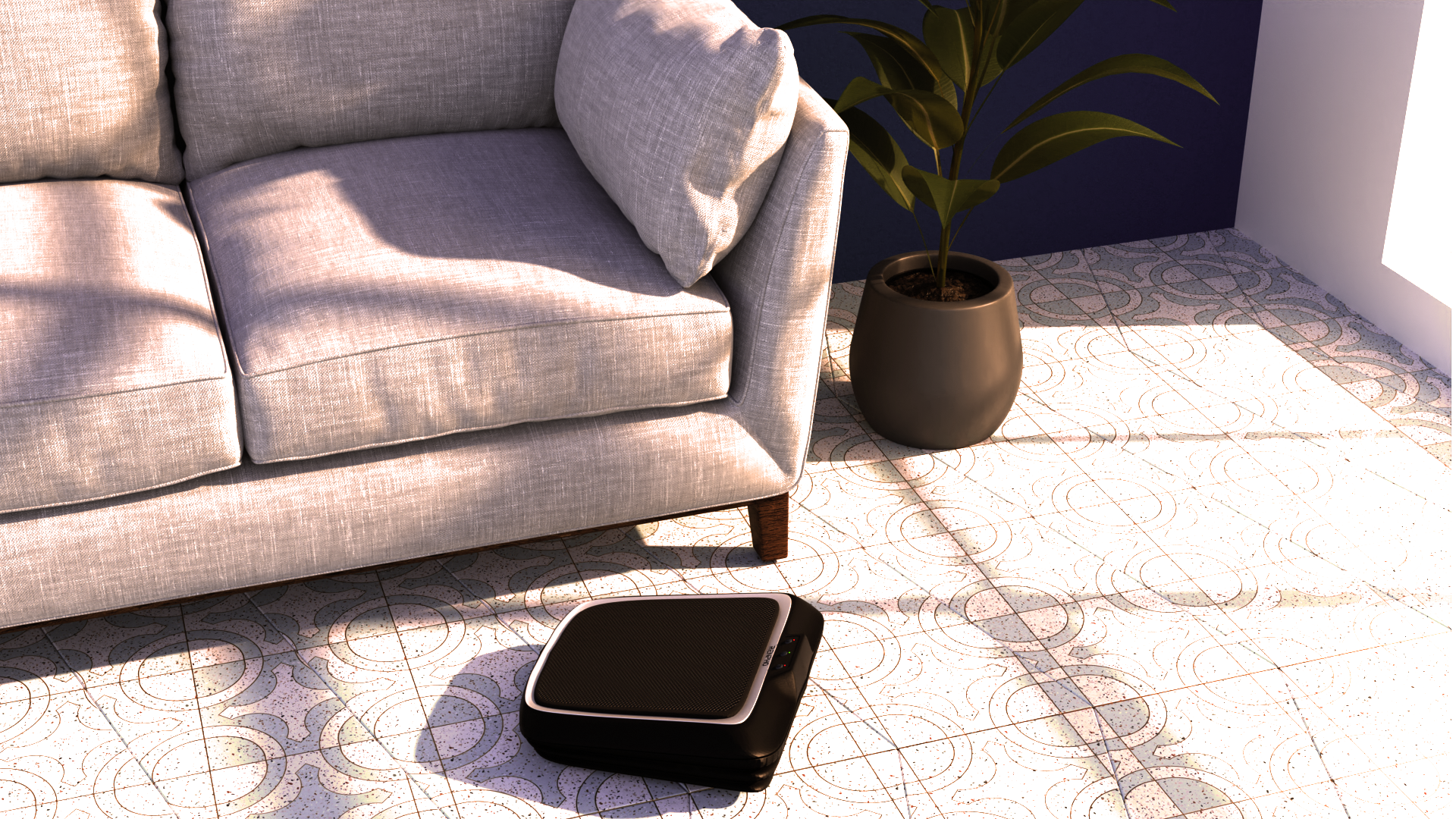Foot Massage 101: Can It Help with Migraines?

Stay tuned to our latest news
Migraines can be incredibly annoying due to the intense pain and discomfort they cause. While over-the-counter medication and traditional methods effectively provide relief, it's worth considering alternative approaches, such as a foot massage. Rooted in the ancient practice of reflexology, foot massage targets specific reflex points on the feet that are believed to correspond to different parts of the body. By applying pressure to these points, it aims to stimulate the body's natural healing processes and restore balance.
Focusing on reflex points associated with the head, neck, and nervous system, foot massage aims to address imbalances and blockages that may contribute to migraines. Let’s explore the potential benefits of foot massage for migraines and provide practical tips on how you can incorporate it into your self-care routine.
Foot Massage vs. Foot Reflexology: What’s the Difference?

Are you confused about the difference between foot massage and foot reflexology? While many people use these terms interchangeably, they actually have distinct differences. Both practices involve the manipulation of the feet for therapeutic purposes, but they have different techniques, goals, and benefits. Understanding these differences can help you make informed decisions about which approach may be best for your needs.
Foot massage is a general term that refers to the manipulation and kneading of the soft tissues of the feet. It can involve techniques such as stroking, kneading, and applying pressure to promote relaxation, relieve tension, and improve circulation. It is typically performed for relaxation purposes, stress reduction, and improving overall well-being.
On the other hand, foot reflexology is a specific practice rooted in ancient Chinese traditions. It is based on the concept that specific reflex points on the feet correspond to various organs, glands, and parts of the body. By applying pressure and manipulating these reflex points, practitioners aim to stimulate the body's natural healing processes and restore balance. This method is often used as a complementary therapy to address specific health concerns and promote overall wellness.
Benefits of Foot Massage
As previously mentioned, foot massages offer numerous benefits, including relaxation, tension relief, and improved circulation. Massaging the feet stimulates blood flow and circulation, helping with tension and reducing the risk of blood clots. This can also lead to a decrease in headaches and migraines, as improved circulation allows for better oxygen flow to the brain.
Furthermore, foot massages can also help to control PMS pain. Targeting specific pressure points in the feet can alleviate symptoms such as cramps and bloating, providing natural relief for women during their menstrual cycle. Additionally, regular massage sessions can prevent ankle injuries by strengthening the muscles and improving flexibility in the feet and lower legs. This can be particularly beneficial for athletes or individuals who are prone to ankle sprains.
Another benefit is their ability to lower blood pressure. The relaxation and stress relief you get can help to reduce overall tension in the body, contributing to lower blood pressure levels. Overall, foot massages offer a range of benefits for both physical and mental well-being, making them a valuable addition to any self-care routine.
Benefits of Foot Reflexology
Foot reflexology induces deep relaxation and alleviates stress by applying pressure to specific reflex points on the feet, stimulating the release of endorphins — natural "feel-good" hormones promoting relaxation. This aids individuals in unwinding and finding relief from the stresses of daily life.
In addition to stress reduction, it can also improve circulation throughout the body. By targeting the reflex points on the feet, this ancient practice stimulates the nerves and increases blood flow to the corresponding organs and body systems. This enhanced circulation can deliver oxygen and nutrients more efficiently to various tissues, promoting overall health.
Foot reflexology may also relieve pain and tension by targeting tender or sensitive reflex points on the feet, aiming to restore balance and alleviate discomfort. Many individuals find that attending sessions regularly helps reduce pain associated with conditions such as headaches, migraines, back pain, and plantar fasciitis. It may also help relax tight muscles and promote muscular and joint flexibility.
While foot reflexology has been enjoyed by many individuals and has anecdotal evidence supporting its benefits, it is advisable to consult with a healthcare professional before incorporating it into your wellness routine, especially if you have any underlying health conditions or concerns.
What Are Migraines?

Migraines are a type of headache that can cause intense throbbing or pulsing pain, often on one side of the head. They are often accompanied by symptoms such as nausea, vomiting, and sensitivity to light and sound. Moreover, they can last anywhere from a few hours to several days and can significantly impact daily life, leading to missed work or social activities.
Potential causes and triggers of migraines can vary from person to person but may include stress, hormonal changes, certain foods or food additives, and environmental factors. Understanding one's individual triggers can be an important step in managing migraines.
Common methods for treating and managing migraines include medication, such as pain relievers or prescription drugs specifically designed for migraines, relaxation techniques like meditation or yoga, and alternative therapies such as acupuncture or massage therapy. It's important for individuals with migraines to work closely with their healthcare provider to develop a personalized treatment plan that works best for them.
Can Foot Massage Relieve Migraine?

Many individuals have reported that foot massage can provide relief for migraines, although scientific evidence supporting its effectiveness is limited. Foot massage, specifically targeting reflex points associated with the head, neck, and nervous system, aims to address imbalances and blockages that may contribute to migraines. By applying pressure to these reflex points and manipulating the soft tissues of the feet, foot massage seeks to stimulate the body's natural healing processes and promote relaxation.
While there is a lack of rigorous scientific studies examining the direct impact of foot massage on migraines, it might actually help alleviate symptoms for some individuals. The relaxation induced by foot massage may help reduce stress, which is a common trigger for migraines. Additionally, foot massage may improve circulation and relieve tension, potentially providing relief from the head and neck discomfort associated with migraines.
It's important to note that the effectiveness of foot massage for migraines can vary from person to person. Some individuals may find significant relief, while others may experience little to no effect. As always, it is advisable to consult with a healthcare professional for a comprehensive evaluation and to discuss appropriate treatment options for migraines. While foot massage can be a complementary approach, it should not replace medical advice or prescribed treatments.
Can Foot Reflexology Relieve Migraine?
Foot reflexology can help relieve symptoms by targeting the areas on the feet associated with the head and neck.
Reflexologists use a reflexology foot chart to identify the specific points on the feet that correspond to different parts of the body. By applying pressure to these points, they can stimulate the corresponding organs and systems, promote relaxation, improve circulation, and alleviate pain.
Overall, foot reflexology offers a non-invasive and natural approach to migraine relief, and it can be an effective complementary therapy for those seeking holistic and alternative treatments.
When to Avoid Foot Massage and Reflexology?
Individuals should avoid foot massage and reflexology in certain cases, such as when they have unhealed foot injuries, open wounds, or infections. Foot massage and reflexology can exacerbate these conditions and hinder the healing process. Additionally, individuals with blood clots in the legs or feet should avoid foot massage and reflexology, as the pressure and manipulation of the feet could dislodge the clot and pose a serious health risk.
Furthermore, those with certain medical conditions such as osteoporosis, gout, or peripheral neuropathy should also avoid foot massage and reflexology, as it may worsen their symptoms or cause further complications.
Takeaway
Ultimately, while foot massage and foot reflexology may offer potential benefits for migraine relief, they should be considered as complementary approaches rather than standalone treatments. It's important to approach them as part of a comprehensive migraine management plan, along with other evidence-based treatments and lifestyle modifications. Working with a healthcare professional can help determine the best course of action for managing migraines and ensuring overall well-being.
Renpho Health Tips
-

Can Foot Spas Provide the Solution to Your Foot Odor Dilemma?
January 23, 2024
Read more >
-

Unlocking Relaxation: Exploring Foot Reflexology Techniques for Stress Relief
January 17, 2024
Read more >
-

5 Tips for a Relaxing Foot Massage at Home
January 17, 2024
Read more >
-

Pamper Your Foot: 10 DIY Foot Spa Recipes for the Ultimate Relaxation
January 11, 2024
Read more >
-

Foot Reflexology & Acupressure Techniques for a Healthier You
January 9, 2024
Read more >





